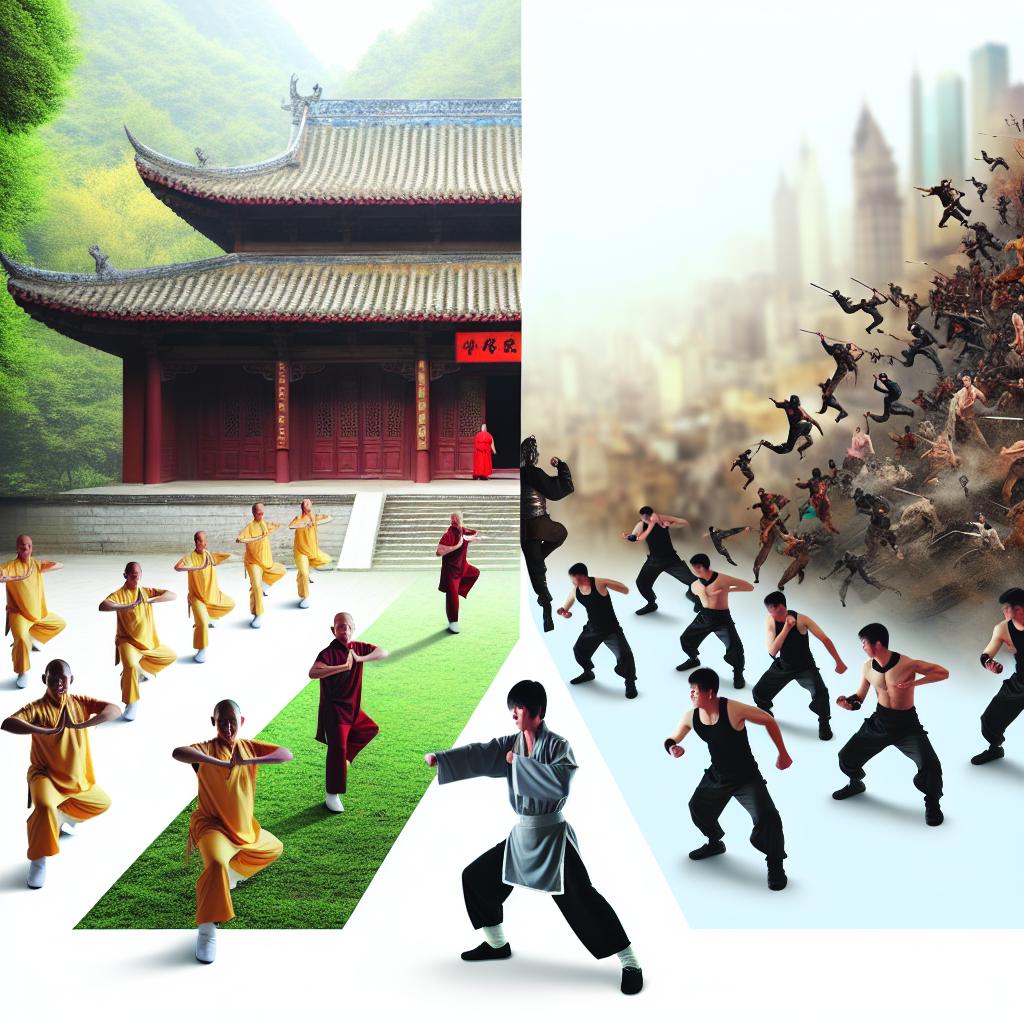
Introduction to Shaolin-based Films and Kung Fu Movies
Shaolin-based films and Kung Fu movies represent pivotal elements within the realm of martial arts cinema, defined by unique characteristics that set them apart. In this exploration, we’ll delve into these distinct categories by using the Shaolin-based film, The 36th Chamber of Shaolin, as a focal point for comparison with general Kung Fu movies. Several notable differences between the two emerge quite clearly upon examination.
Shaolin-based Films: A Focus on History and Philosophy
Shaolin-based films are renowned for their emphasis on the historical and philosophical underpinnings of Shaolin culture. The 36th Chamber of Shaolin, directed by Lau Kar-leung, stands as a prime example, celebrated for its authentic depiction of martial arts training within the revered Shaolin temple. These films prioritize a faithful representation of the arduous discipline and Zen Buddhist philosophies that are intrinsic to the Shaolin way of life.
Such films typically underscore three main aspects:
Authentic Representation: Shaolin-based films strive to authentically portray traditional training methodologies, kung fu techniques, and the disciplined lifestyle adhered to by Shaolin monks. This attention to detail provides viewers with a window into the timeless practices that underpin the Shaolin martial arts tradition.
Historical Context: Another defining feature of these films is their incorporation of historical periods, events, and influential figures that played a role in the evolution of Shaolin Kung Fu. By anchoring their narratives in historical reality, these films offer audiences a rich tapestry of the cultural and historical forces that have shaped Shaolin traditions.
Philosophical Elements: Lastly, Shaolin-based films often weave moral teachings and the quest for inner peace into their storytelling. Rooted in Buddhist ideology, these philosophical components provide depth to the narrative and invite viewers to reflect on their own personal journeys.
Kung Fu Movies: Entertainment and Spectacle
In stark contrast, general Kung Fu movies tend to place a greater emphasis on entertainment and spectacle. These films are distinguished by their electrifying fight sequences and the inventive application of martial arts techniques. The plotlines are frequently centered on individual heroism and personal development through martial arts, highlighting the transformative power of the discipline.
Key characteristics of Kung Fu movies include:
Action-oriented: The heart of Kung Fu movies lies in their vibrant and stylized fight scenes, meticulously crafted to engage and entertain audiences. These sequences often serve as the climactic points of the narratives and are integral to the film’s appeal.
Variety in Storytelling: Kung Fu films are notable for their diverse array of storylines that blend elements of fantasy, drama, and comedy. This versatility allows filmmakers to experiment with different narrative structures and themes, resulting in a wide spectrum of cinematic experiences.
Broad Martial Arts Techniques: Unlike Shaolin-based films, Kung Fu movies incorporate a vast array of martial arts styles beyond the traditional Shaolin kung fu. The techniques are frequently tailored for cinematic impact, enhancing the visual appeal of the fight sequences and offering viewers a thrilling spectacle.
Differences in Film Techniques and Narration
The narrative techniques employed by Shaolin-based films such as The 36th Chamber of Shaolin demonstrate a thoughtful and meticulous approach to storytelling. These films invest considerable time in character development and depict the transformative journey of characters as they absorb the principles of Shaolin martial arts. The pacing is deliberately measured, mirroring the protracted process of mastering martial arts.
On the other hand, Kung Fu movies are characterized by a rapid pacing and inventive fight choreography. They frequently employ wire work and special effects, adding a layer of visual dynamism to the combat scenes. While these films might occasionally touch on philosophical themes, such motifs are generally secondary, serving to complement rather than overshadow the central action sequences.
Conclusion
In conclusion, Shaolin-based films such as The 36th Chamber of Shaolin diverge from mainstream Kung Fu movies in several significant ways. Primarily, their focus lies in authenticity, historical accuracy, and philosophical teachings. Conversely, general Kung Fu films prioritize action, entertainment, and a broader narrative scope, featuring a diverse array of stories and martial arts styles. Both categories hold a profound significance within cinematic history and the broader martial arts culture, each making unique contributions to the evolution of film. While Shaolin-based films provide a lens into the ethereal harmony of philosophy and discipline, Kung Fu movies serve as vibrant depictions of heroism and the dynamic art of martial combat. Together, they enrich the tapestry of martial arts cinema, showcasing the diversity and complexity of human struggle and triumph.
This article was last updated on: July 26, 2025

